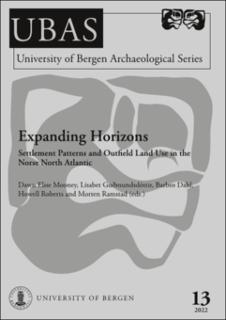Haymaking as the driving force for shieling use from the Viking Age/early Medieval Period: a comparative study of two outfield areas in southwestern Norway
Chapter
Published version

Åpne
Permanent lenke
https://hdl.handle.net/11250/3052598Utgivelsesdato
2022Metadata
Vis full innførselSamlinger
Sammendrag
This paper focuses on the southernmost group of shielings in Norway where haymaking was the driving force for the shieling practice. Two shieling zones in the county of Rogaland that differ in respect to relief and proximity to their ‘home’ farms are compared: one from the inner fjord, subalpine birch zone and one from the outer coastal heathland plateau. Land-use practice is discussed using archaeological, ethnological and historical data supplemented by pollen analysis. The activities in these two shieling zones vary over time, as did the way in which they stored hay. On the coastal plateau the use of shielings has been practiced since the Pre-Roman Iron Age/Roman Iron Age transition, while in the inner fjord area it is recorded from the Migration Period. The use of shielings for haymaking can be traced back to the Viking Age/Early Medieval Period in both areas; however, the Post-Medieval Period seems to be the major period for the stacking of hay. On the coastal heathland plateau, hay was stored using single poles and four-post buildings, while single poles and enclosures were used in the fjord district. Mowing was practiced in both areas up to AD 1950.